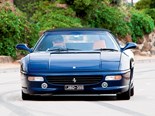Ferrari 250 GTO Recreation - Past Blast































|

|

|

|

|

|

|

|

|

|

|

|

|

|

|
Only you and your bank manager would pick that it's not a kosher Ferrari GTO
So you reckon you know your Ferraris and think you could you tell the difference between an original Maranello classic and a note-for-note recreation? Okay, look closely, is this a very rare Series II Ferrari 250 GTO or a very good doppelganger? We’ll make it easy for you: this beautiful machine is a very, very good recreation and it is a Ferrari.
The last time I checked, a Series I Ferrari 250 GTO was worth upwards of $50m – if you could find one for sale – because only 40 GTOs were made between 1961 and ’64, including two prototypes. There were thirty-two of the revered Series I 3.0-litre V12 GTOs, three 4.0-litre ‘330’ GTOs, a 250 GTO LM Berlinetta, and three Series II models. And as they were built to race – the ‘O’ stands for Omologato (homologation) – not all have survived which is why they always command such stratospheric prices today.
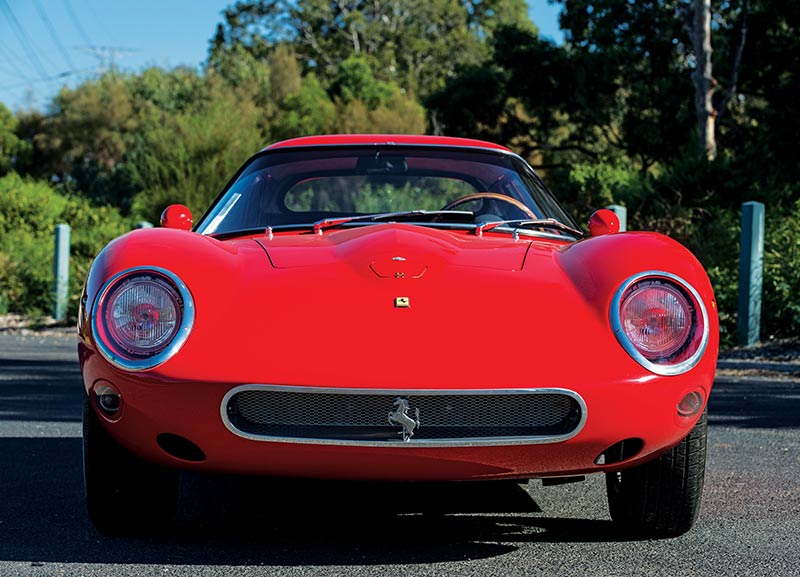
This 1964 250 GTO would be extremely valuable if it were one of the three original Series II cars. It was built by master New Zealand coachbuilder Rod Tempero, who is also world famous for his C and D-Type Jaguar recreations and operates out of a big shed (where chickens and ducks freely roam) in the small South Island town of Oamaru. It took three painstaking years and Rod has done a beautiful job, the craftmanship is outstanding. Like the real thing, it’s also as rare as hen’s teeth but will only set you back around $1m.
The world is rife with recreations these days because cashed-up owners who don’t want to risk driving their multi-million dollar originals on the road or track can get the same kick from driving a top notch recreation. And frankly, most people couldn’t tell the difference. If I had a $50m car I don’t think I’d ever drive or race it but the FIA permits exact replicas to race in sanctioned events these days.
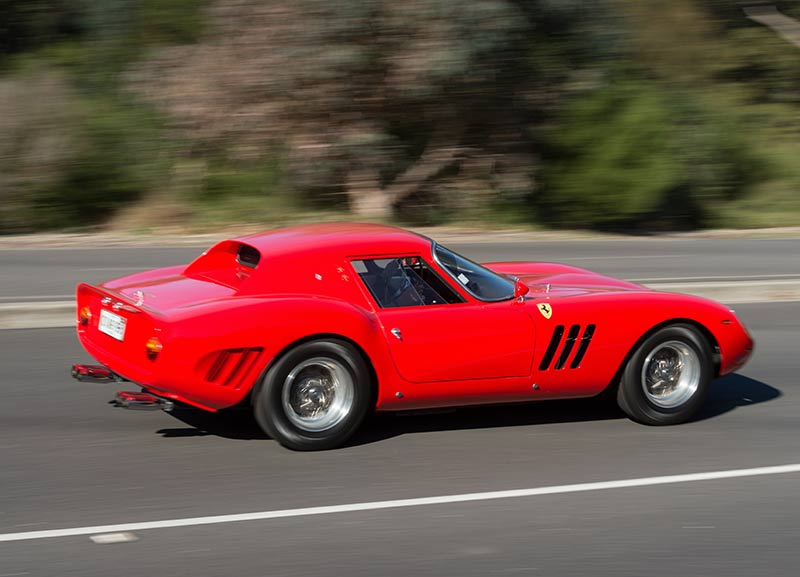
Some Ferrari fans might not recognise this car as being part of the exalted GTO line because it doesn’t have the triple removable ‘D’ vents in the nose that the iconic 1962-63 Series I cars have. But Ferrari had a good reason for tinkering with the styling. For 1964, the front and rear ends were redesigned and a new 250 LM-style roof fitted to improve aerodynamics. Ferrari was facing a new threat at Le Mans, the Ford GT40 which was a more advanced mid-engined race car and in the mid-60s more aero-efficient meant a higher top speed, unlike today when we go for more downforce.
This car is based on a 1965 US-delivered Series I Ferrari 330 GT and its all-alloy body was accurately hand-formed by Tempero using a genuine Series II GTO as a template. Like the original 330 GTO, it has a 4.0-litre V12 with the classic six downdraught Weber carburettor set-up driving a four-speed Ferrari overdrive transmission and live rear axle.
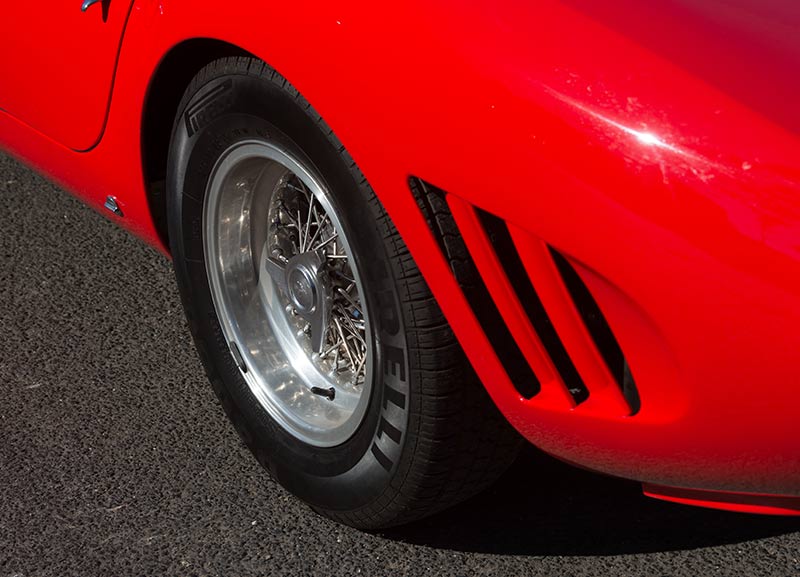
One modern touch is the leather seats (competition cars had blue corduroy-covered buckets) and whoever owned it last must have been a tall bloke because the seat isn’t on runners and I was sitting too far back for my liking. And the cabin is very cramped even for me, with very little head room because of the narrowed roof line. It would have been a tight fit for the racers back in 1964, even with the thin helmets they wore back then.
The dash has a big chronometric tacho that flicks around all over the place and the 180mph speedo is mounted, like an afterthought, on the transmission tunnel ahead of a beautiful alloy shifter.
The steering wheel is stunning and huge but that gives you more leverage. The steering is quite low geared – not unusual for European cars – and you find yourself moving your hands around the wheel. I’ve watched footage of Fangio and he drove with his hands at ‘20 to four’ and shuffled the steering wheel, which is not the way I’d teach you today, but that’s how they did it back then with those big wheels and it works well.
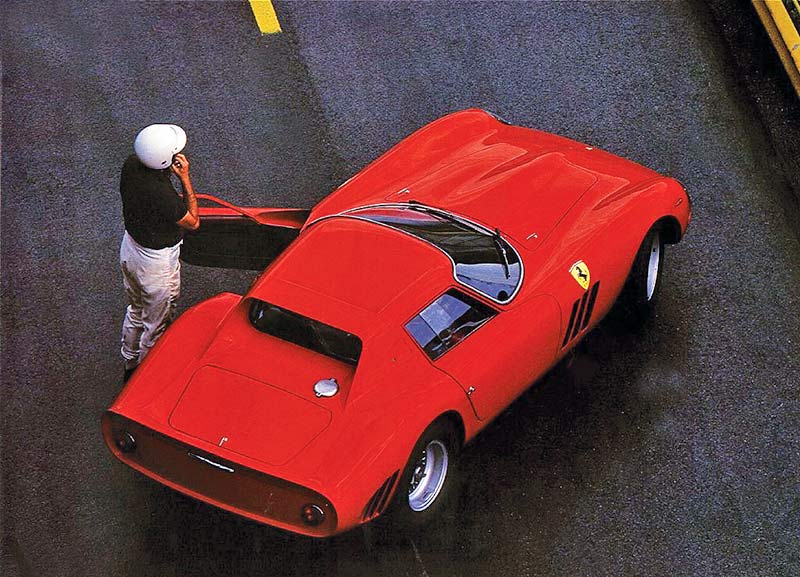
The brake pedal is nice and firm, the clutch is quite long, and the accelerator controls the Webers via linkages – no fly-by-wire in the 60s – and even a little crack of the throttle really wakes up the smooth 300 horsepower V12. The gear lever is long and thin with a classic Ferrari ball-knob and the ratios are nicely stacked. Changes need to be firm and precise but it’s nice to use with that trademark metallic click-clack sound through the gate.
It understeered a little at the speeds I drove it but I really enjoyed punting it through sweeping corners, which is what it was made for, classic flowing European tracks. The tyres are modern but not overly wide, but it would have had no grip on the hard rubber they raced on in the 60s and handled like a dog on lino. I reckon you would have been in a constant drift.

But when you tip it into a corner you can really feel the car – a sensation that you don’t seem to get with many modern cars – and the chassis really feels alive and part of you. Or vice versa. You get that with thoroughbred cars. And this chassis is 52 years old, don’t forget!
This car is such a show stopper, it looks almost alien among boring modern cars and heads swivelled as we drove to our test location. During the photoshoot a couple of blokes in a new Ferrari and Porsche Boxster drove past, did a double-take, dropped a U-ey then accelerated past us begging for attention. Sorry fellas, your cars might be more sophisticated and quicker but they don’t have the star power or soul of this GTO.
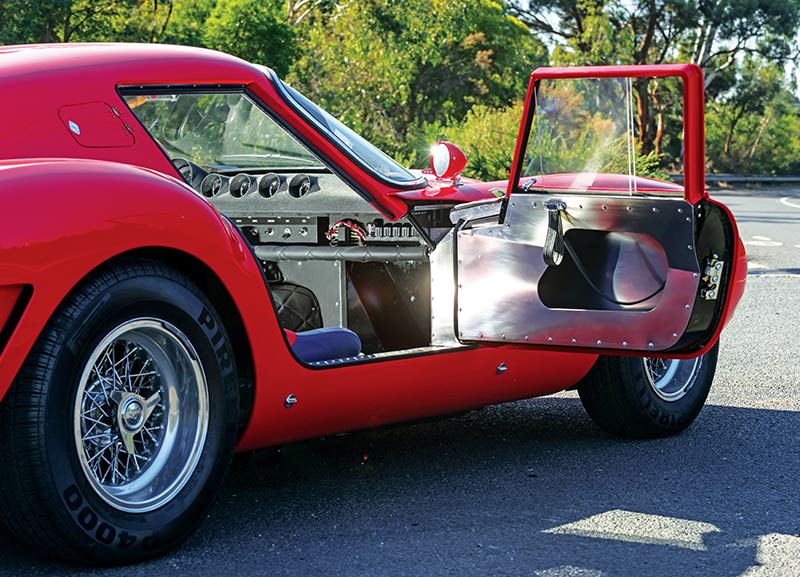
I can’t imagine what it would have been like to blast down the Mulsanne Straight at Le Mans at 180mph on a rainy night in one of these – the men who did had big balls – but I would have loved to take this car to a racetrack and really wind up that fabulous V12. There are very few better automotive noises than the raw sound of six Webers unmuffled by air cleaners. For me that noise is the spirit of 60s sportscars and Ferraris from that era are the most evocative. Can anyone lend me a lazy million?
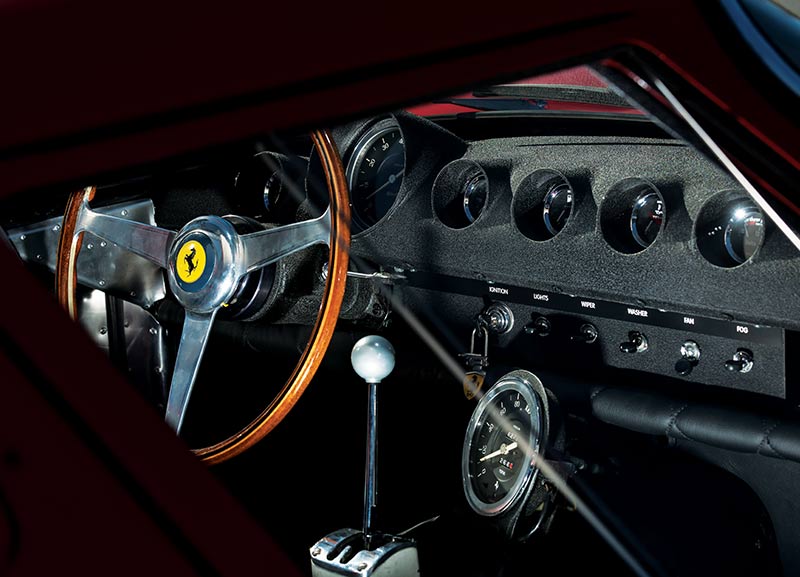
FERRARI 250 GTO RECREATION
Engine 3967cc V12 SOHC 24v
Power 224kW @6600rpm
Torque 390Nm @ 5000rpm
Gearbox 4-speed manual with overdrive
Suspension Independent, unequal-length wishbones, telescopic dampers, anti-roll bar (f), live axle, twin radius arms, semi-elliptical leaf springs, coil-over telescopic dampers (r)
Brakes Discs (f&r)
Unique Cars magazine Value Guides
Sell your car for free right here
Get your monthly fix of news, reviews and stories on the greatest cars and minds in the automotive world.
Subscribe

.jpg)














